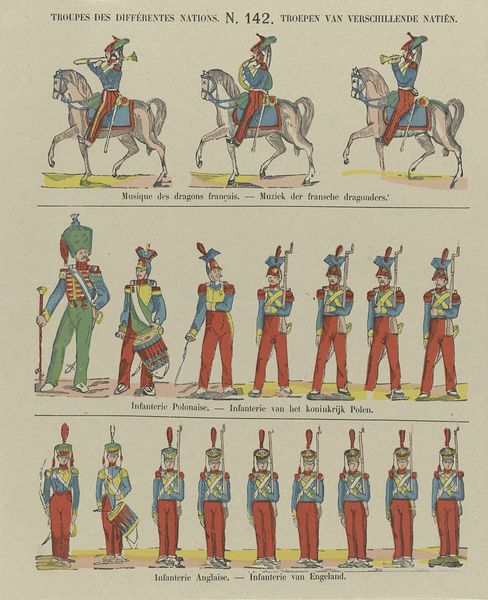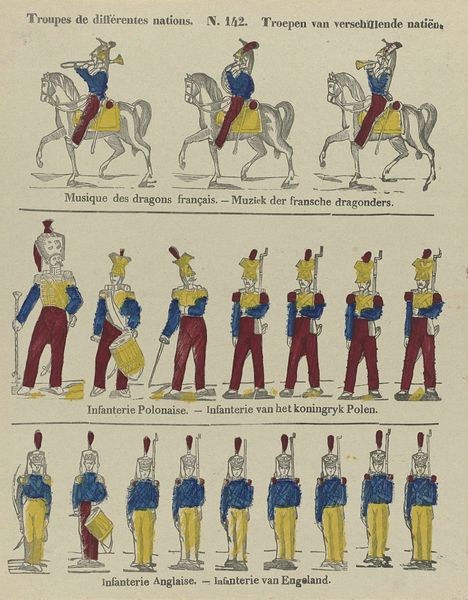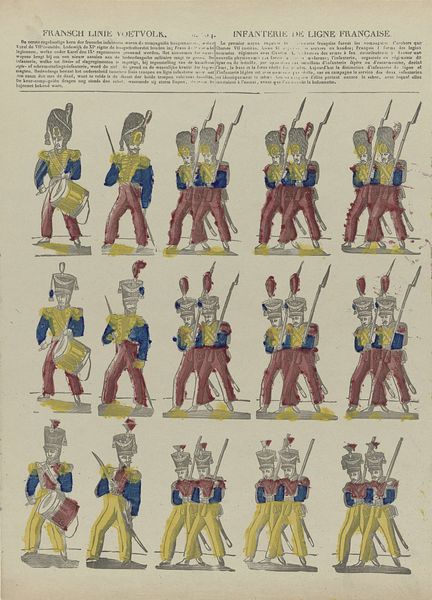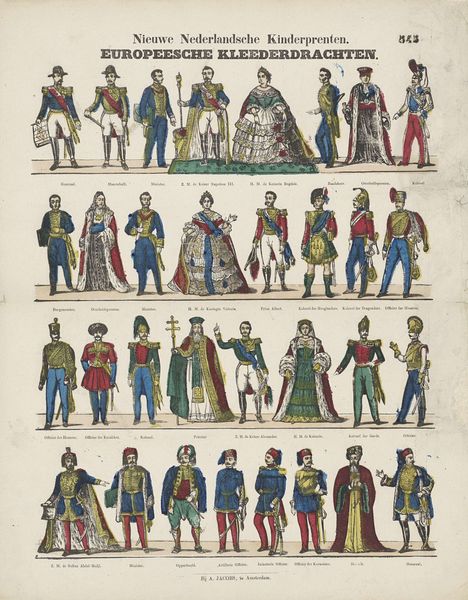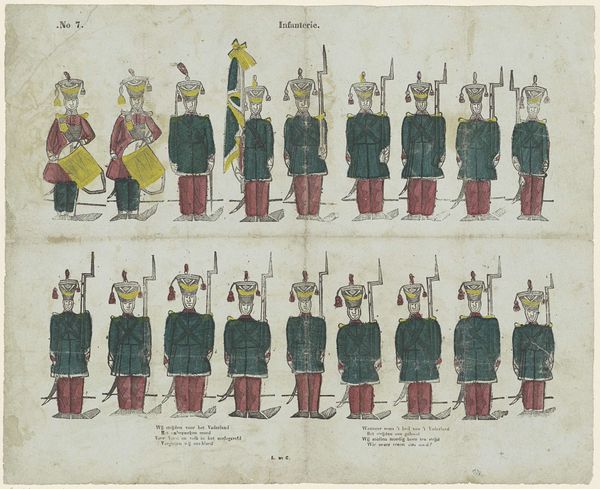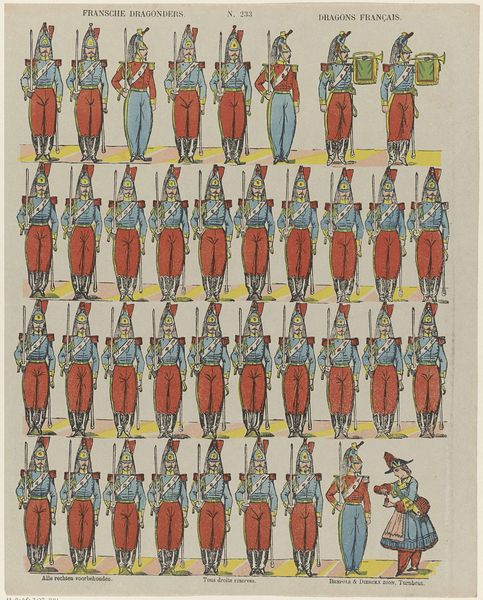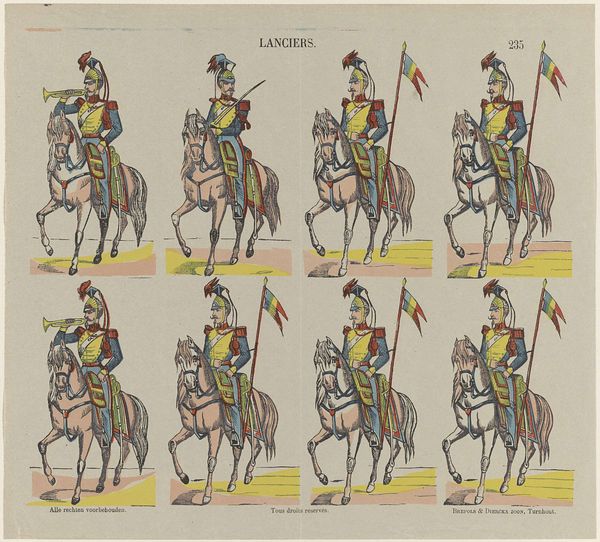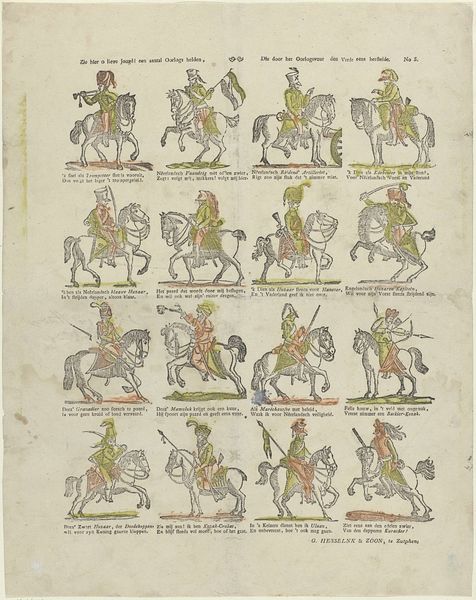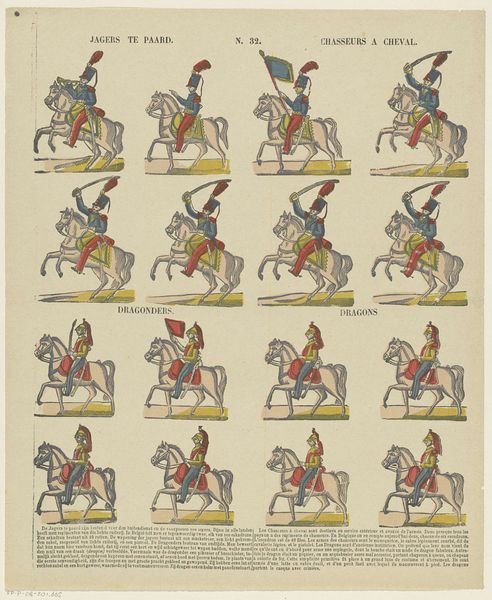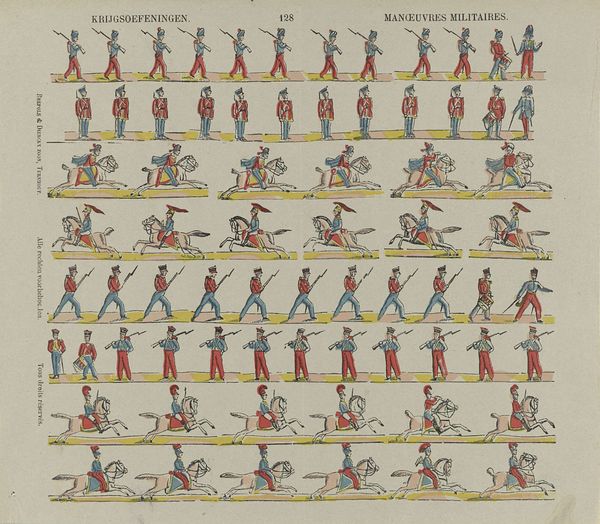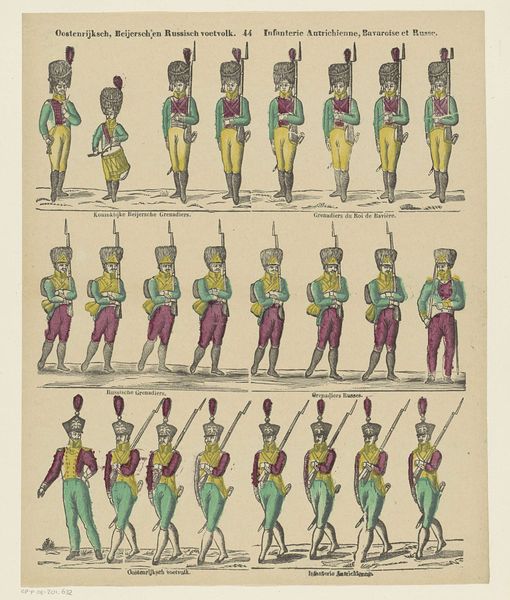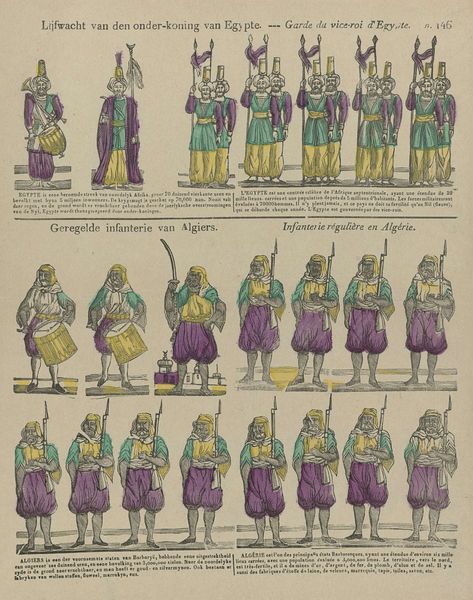
Burgerwacht van België / Garde civique de la Belgique 1833 - 1911
0:00
0:00
drawing, lithograph, print
#
portrait
#
drawing
#
lithograph
# print
#
traditional media
#
group-portraits
#
genre-painting
#
history-painting
#
academic-art
Dimensions: height 384 mm, width 307 mm
Copyright: Rijks Museum: Open Domain
Editor: This is “Burgerwacht van België / Garde civique de la Belgique,” a lithograph made sometime between 1833 and 1911 by Brepols & Dierckx zoon. It’s got this almost scientific illustration feel, cataloging different uniforms. What stands out to you about this print? Curator: What I find fascinating is how this print presents a standardization of labor and identity through the crafting of these uniforms. Notice how each row denotes a different type of worker-soldier, categorized by their attire, the material signifier of their role within the Belgian Civil Guard. It’s not just about the image; it's about the socio-economic system it implies. How were these uniforms produced? Who made them? Editor: So, you're saying the focus shifts from the aesthetic representation to the means of production and the people involved in that? Curator: Exactly! The lithograph itself becomes a document of industrial processes and the social hierarchy inherent in military structure. The image subtly points to the division of labor. We have different types of uniforms depending on duties and locale, speaking volumes about 19th century Belgian society. Consider the contrast in fabrics, dyes, even buttons—what do those differences tell us about access to resources? Editor: That’s interesting. I hadn't thought about it that way, but seeing it as a record of material culture makes it much more complex. I am looking now into those minute visual and textural differentiations. Curator: And what does it mean that this was a widely reproduced print? How does this widespread circulation reinforce notions of civic duty or national identity, or the accessibility of information within a society structured around economic disparities? Editor: I guess it forces you to consider the political and economic implications tied to artistic production, not just the artistic skill. Curator: Precisely. Hopefully you consider not only the artist’s hand, but also the hands of those who produced the very materials upon which art is made.
Comments
No comments
Be the first to comment and join the conversation on the ultimate creative platform.
